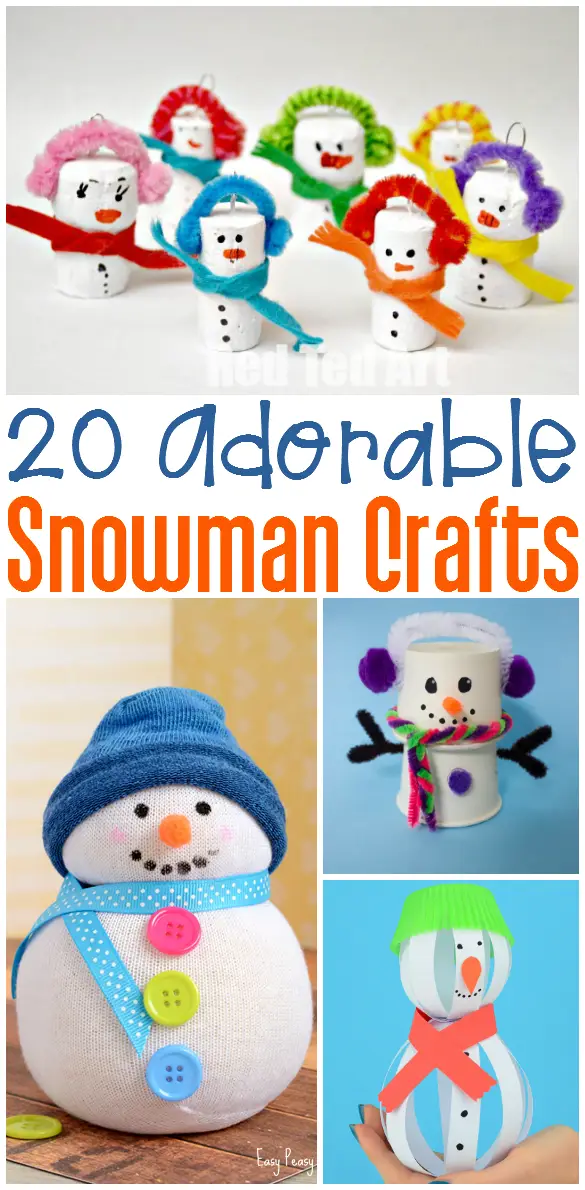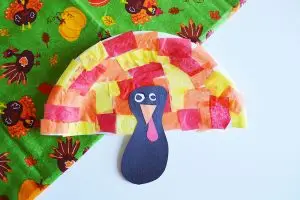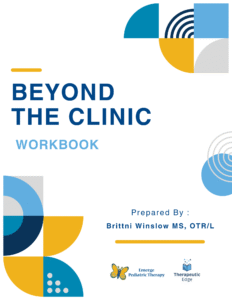
Let’s talk about one of those critical skills that we often overlook….using the ‘helper’ hand. Most of us have one hand that’s dominant and the other is designed to partner up and be the super assistant! His job is no less important since we all need a little ‘support’ sometimes…….all joking aside, we need to help those children who have difficulty crossing the body’s midline. What’s this? It’s an imaginary line that divides our body in half vertically.
Many of our children struggle to reach across this imaginary line. This can cause great difficulties from writing the letters X and M to using scissors and tying shoes! Watch a fun video we created with information and tips about crossing the midline here.
WHY is it important to have a dominant hand and a helper hand? It’s because when one hand is dominant, it can develop strength, speed, and accuracy to improve efficiency with tasks. Yes, some people are ambidextrous, but the majority of us are not.
WHEN should children have a dominant hand? Babies learn to explore both their environment and their own bodies. One of the most exciting things for parents and babies is when they learn to bring their hands together to clap! They quickly use one or the other hand to use a fork and spoons, color, and brush teeth. Typically, beginning at three to the age of 6 years, children develop a preference for one hand.
Reference: (Alberta Health Services. (2011). Hand dominance. Alberta Health Services. Retrieved from www.capitalhealth.ca/especiallyfor/otonhand/finemotor/handdominance.htm)
If this has not occurred by the age of six, there are many types of activities that can encourage dominant hand development. There’s another reason children may switch hands……weakness. If your child’s muscles are weak, he may fatigue quickly. So, if he’s coloring and his left-hand gets tired, he may switch to his right hand. Here’s a video we made to work on hand strengthening and fine motor.
Since it’s handwriting month, I’m going through my frequently asked questions list and found a gem, “Cara, my son uses his right hand to cut but doesn’t use his left hand to hold the paper.” Here’s another one, “HELP! Mary is always messy when she’s writing, she doesn’t realize she has to hold the paper while she’s writing and it’s slipping all around her desk.”
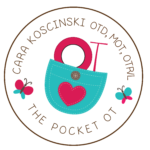
Here are my favorite ‘Out of the POCKET’ Tips from our book, The Parent’s Guide to Occupational Therapy for Autism & Special Needs:
1) Put a sticker on the helper hand. We use a simple smile face sticker and place it on the child’s fingernail or the back of the helper hand when practicing cutting and other fine motor skills. If the child prefers, we can choose glittery, scented, or one of the thousands of sticker types from which to choose. At first, some children may require BOTH a sticker on the helper hand PLUS a matching sticker on the portion of the paper where the hand will assist. This way, children can ‘match’ up the stickers.
2) Trace the helper hand while it’s holding the paper. In general, kids LOVE getting their hands traced. They enjoy watching their hand grow and comparing the hand to another grown-up and peers. Use fun colors and even decorate the traced hand with glitter glue!
3) Make a video of the child using their helping hand and then not using their helper hand and let them ‘critique’ the videos. Kids enjoy playing ‘teacher’ and they like to make videos so why not combine the two? I ask for parental permission to record the child OR do it from the side and shoulders down showing hands only. Show the child how ‘sloppy’ and/or difficult the job seems to be when the helper is not doing his job. Allow them to make a video of you doing the same thing! Be a fun model to make the activity a game with awesome skill-building goals.
4) Give the helper hand a NAME! I love to see what names kids come up with for their helper hand. Sometimes, they make up a rhyme or a silly name. Other times, it’s Henry Helper, Houdini Helper, and other ‘H’ words.
5) Use these awesome helper hand-eye rings!
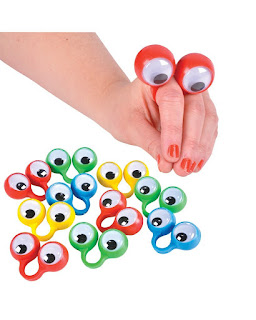 |
| Amazon Affiliate |
Google eye rings are SO much fun and are affordable on Amazon. I use the eye rings for SO many more tasks in the school and clinic as they truly help children to have fun while learning play and imaginary skills. Other options are candy rings, but I’m always hesitant to give kids candy due to allergies, diet restrictions, etc.
You might try using google eyes and pipe cleaners to re-create the eye rings, but I find it much easier to order them PLUS the eyes are actually wiggly and move! Thanks for reading! Want more information on motor skill development? Here’s my earlier post.

